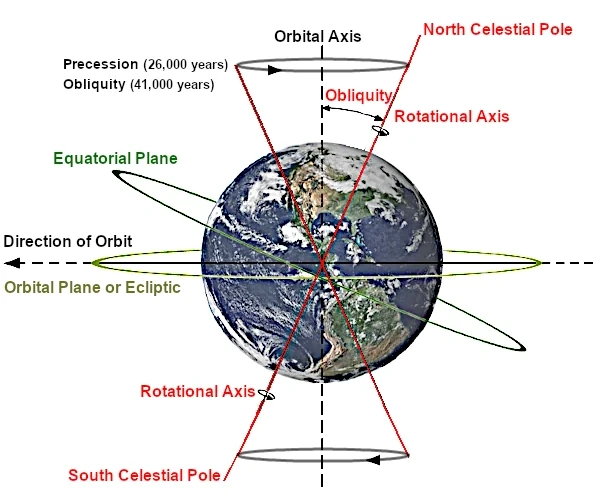
The mass of the planets varies considerably, from small Mercury to massive Jupiter. In parallel, density reveals their internal nature: terrestrial planets (Mercury, Venus, Earth, Mars) are denser than gas giants. This reflects their composition dominated by metallic and silicate elements, unlike the giants rich in hydrogen and helium.
The planetary diameter reflects the physical size of a planet. It is strongly linked to mass but also depends on composition. Jupiter, the largest, exceeds 140,000 km, while Mercury is less than 5,000 km. The giants have an extended atmosphere, inflating their apparent radius.
The average distance of a planet from the Sun defines its overall temperature, but extreme distances (aphelion and perihelion) modulate seasonal variations. Mercury and Pluto (not listed here) have strong eccentricities, while Venus and Neptune have nearly circular orbits.
The average orbital speed depends on the distance from the Sun, via Kepler's third law. The closer a planet is to the Sun, the higher its speed and the shorter its revolution period. Mercury completes its orbit in 88 days, compared to 165 years for Neptune.
Inclination determines the angle of the orbit relative to the ecliptic plane, and eccentricity measures its elongation. These two factors influence the seasonal and orbital climate variations of the planets. Uranus, with its highly inclined axis, experiences extreme seasons.
Escape velocity is the minimum speed needed to escape a planet's gravitational attraction. It is proportional to its mass and inversely to its radius. This conditions the retention of an atmosphere: only massive and cold planets can retain light gases like hydrogen.
| Planet | Mass (1024 kg) | Density (kg/m³) | Diameter (km) | Average Distance (106 km) | Aphelion / Perihelion (106 km) | Orbital Speed (km/s) | Revolution Period (days) | Inclination (°) | Eccentricity | Escape Velocity (km/s) |
|---|---|---|---|---|---|---|---|---|---|---|
| Mercury | 0.330 | 5427 | 4879 | 58 | 69.8 / 46.0 | 47.9 | 88 | 7.0 | 0.206 | 4.25 |
| Venus | 4.87 | 5243 | 12104 | 108 | 108.9 / 107.5 | 35.0 | 225 | 3.4 | 0.007 | 10.36 |
| Earth | 5.97 | 5514 | 12756 | 150 | 152.1 / 147.1 | 29.8 | 365.2 | 0.0 | 0.017 | 11.19 |
| Mars | 0.642 | 3933 | 6792 | 228 | 249.2 / 206.6 | 24.1 | 687 | 1.8 | 0.094 | 5.03 |
| Jupiter | 1898 | 1326 | 142984 | 778 | 816.6 / 740.5 | 13.1 | 4331 | 1.3 | 0.049 | 59.5 |
| Saturn | 568 | 687 | 120536 | 1430 | 1514.5 / 1352.6 | 9.7 | 10747 | 2.5 | 0.057 | 35.5 |
| Uranus | 86.8 | 1270 | 51118 | 2870 | 3003.6 / 2741.3 | 6.8 | 30589 | 0.8 | 0.046 | 21.3 |
| Neptune | 102 | 1638 | 49528 | 4495 | 4558.9 / 4444.5 | 5.4 | 59800 | 1.8 | 0.010 | 23.5 |